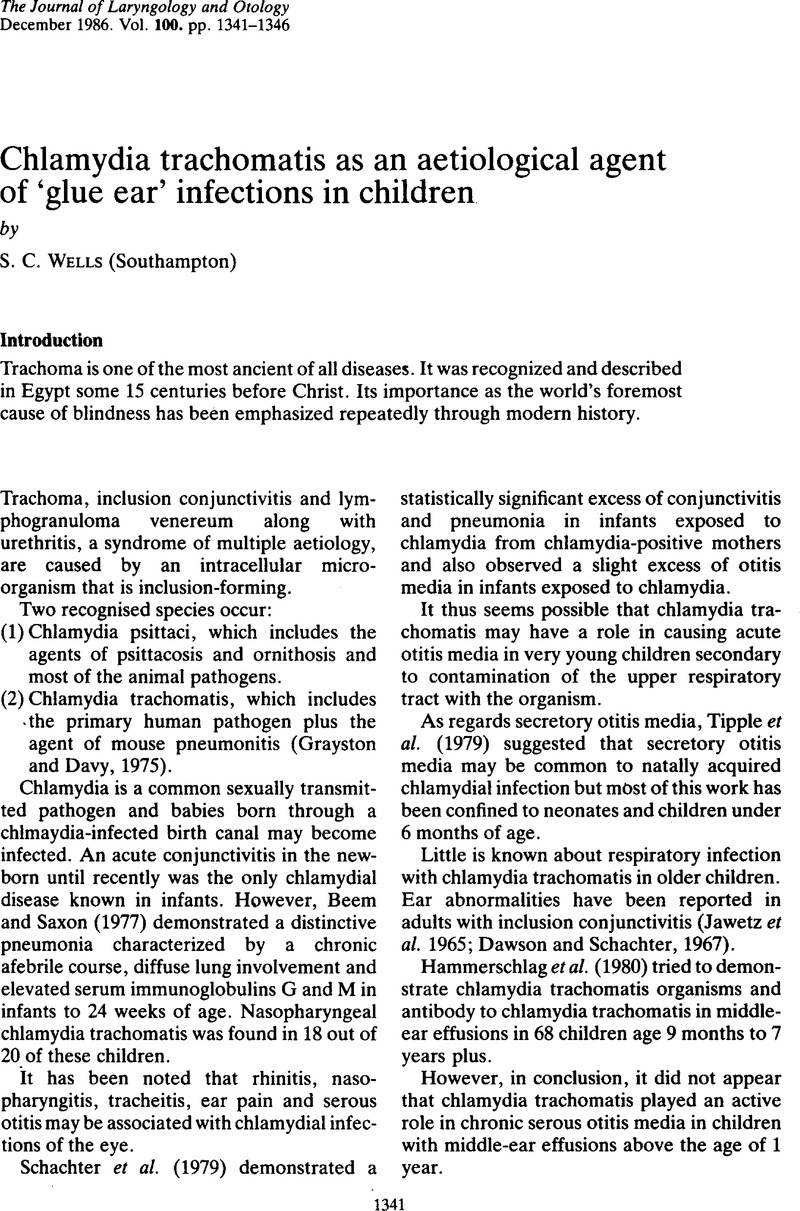Crossref Citations
This article has been cited by the following publications. This list is generated based on data provided by Crossref.
Bellini, M. J.
Peel, R. N.
and
Terry, R. M.
1988.
Chlamydia: Its influence in chronic secretory otitis media.
The Journal of Laryngology & Otology,
Vol. 102,
Issue. 8,
p.
673.
Blackston, Marilyn L.
Lovchik, Judith C.
and
Gray, William C.
1989.
Presence ofChlamydia Trachomatisin Tympanocentesis Fluid Assessed by Immunofluorescence Microscopy and Cell Culture.
Otolaryngology–Head and Neck Surgery,
Vol. 100,
Issue. 4,
p.
348.
Ogawa, Hiroshi
Hashiguchi, Kazuhiro
and
Kazuyama, Yukumasa
1990.
Isolation of Chlamydia trachomatis from the Middle Ear Aspirates of Otitis Media.
Acta Oto-Laryngologica,
Vol. 110,
Issue. 1-2,
p.
105.
Hashiguchi, Kazuhiro
Ogawa, Hiroshi
Koga, Keijirou
Tateno, Hideki
and
Yamazaki, Yoshiji
1990.
Otitis Media with Effusion Associated with Chlamydia trachomatis Infection in Children.
Auris Nasus Larynx,
Vol. 17,
Issue. 3,
p.
149.
Goh, B T
and
Forster, G E
1993.
Sexually transmitted diseases in children: chlamydial oculo-genital infection..
Sexually Transmitted Infections,
Vol. 69,
Issue. 3,
p.
213.



